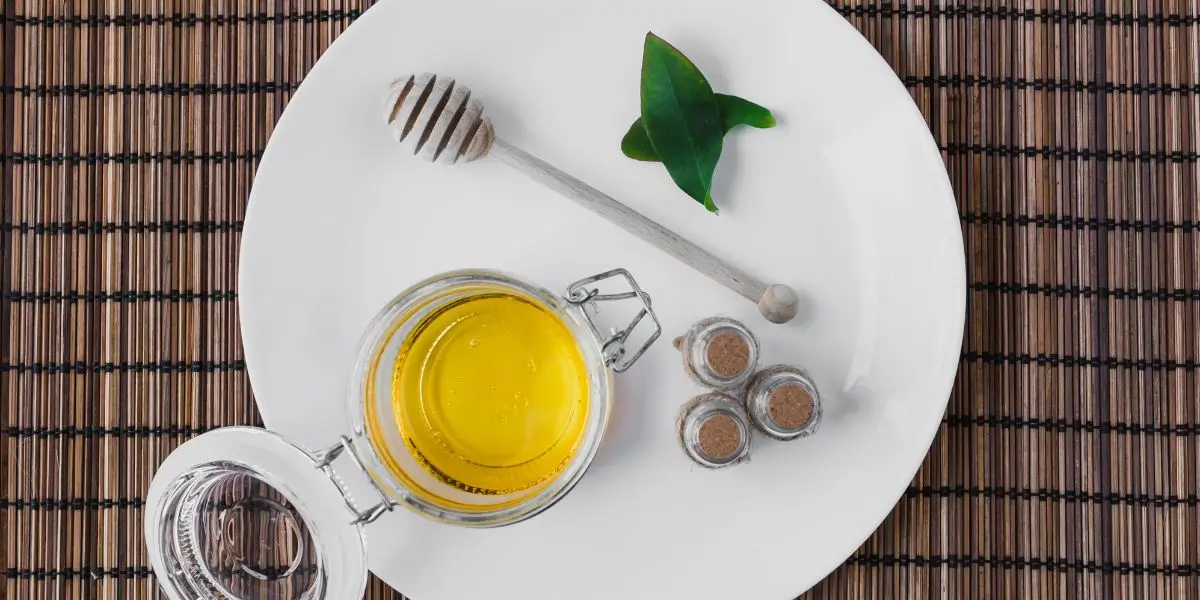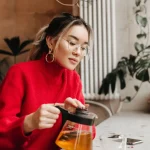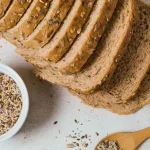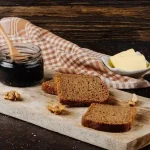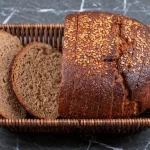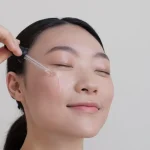Have you ever wondered how Korean celebrities maintain that enviable “glass skin” glow? While most people focus on their famous 10-step skincare routine, there’s a hidden secret that’s been quietly circulating in Korean beauty circles: Korean retinol tea.
I’ll be honest – when I first heard about a tea that supposedly gives you retinol-like benefits, I was skeptical. Can drinking tea really improve your skin? After researching Korean traditional medicine and testing it myself for three months, I’m here to share everything I’ve learned about this fascinating wellness drink.
This isn’t just another beauty trend. Korean retinol tea represents a 2,000-year-old approach to achieving radiant skin from the inside out, and it’s finally getting the attention it deserves.
Related Guide: Korean Retinol Tea Recipe
What Is Korean Retinol Tea?
Let’s clear this up right away: Korean retinol tea doesn’t contain actual retinol. The name is a modern marketing term that describes how this herbal blend supports your skin similarly to retinol treatments – but naturally and without irritation.
Korean retinol tea is a blend of traditional Korean herbs that:
- Support your body’s natural collagen production
- Provide antioxidant protection against skin damage
- Improve circulation for a healthy glow
- Balance hormones that affect skin health
- Support detoxification processes
Think of it as nature’s gentler alternative to retinol, working from the inside out instead of the outside in.
Related Guide: Korean Retinol Tea Loophole
The Korean Philosophy Behind It
Korean traditional medicine believes that true beauty originates from internal health – a concept known as “mi-in” (美人). Instead of just treating skin problems on the surface, Korean retinol tea nourishes your entire body to create lasting radiance.
This holistic approach is why Korean women have been drinking beauty teas for centuries, long before modern skincare existed.
What’s Actually In Korean Retinol Tea?
The magic lies in the carefully selected Korean herbs that have been used for centuries:
Core Ingredients
Ginseng (인삼)
- Boosts collagen production through compounds called ginsenosides
- Improves blood circulation for a natural glow
- Provides energy and stress relief
- Fun fact: Korean ginseng is considered the gold standard globally
Schisandra Berries (오미자)
- Rich in lignans that protect skin cells from damage
- Supports liver detoxification (crucial for clear skin)
- May improve skin elasticity
- Taste note: Called “five-flavor fruit” because it hits all taste buds
Chrysanthemum Flowers (국화)
- Packed with skin-loving antioxidants
- Naturally anti-inflammatory
- Reduces puffiness and supports eye health
- Traditional use: Cooling herb that balances internal heat
Licorice Root (감초)
- Contains natural skin-brightening compounds
- Anti-inflammatory properties
- Helps all other herbs work together harmoniously
- Caution: Can affect blood pressure in large amounts
Supporting Players
Rose Hips: Vitamin C powerhouse for collagen support. Jujube Dates: Provide natural sweetness and digestive support Goji Berries: Beta-carotene and amino acids for cellular protection
Does Korean Retinol Tea Actually Work?
Here’s what the science says:
Proven Benefits:
- Ginseng research shows it can stimulate collagen synthesis (Journal of Ginseng Research)
- Chrysanthemum flowers demonstrate significant antioxidant activity
- Schisandra berries protect against oxidative stress
- Licorice root has anti-inflammatory effects comparable to mild cortisone
Realistic Timeline:
- Week 1-2: Improved energy, better digestion
- Week 4-6: Skin appears more radiant, less dull
- Month 2-3: Noticeable improvements in skin texture
- Month 3+: Friends start asking about your skincare routine
Important: This isn’t a miracle drink. Results depend on consistency, overall lifestyle, and individual body chemistry.
Korean Retinol Tea vs. Topical Retinol
I’ve used both, so here’s my honest comparison:
Korean Retinol Tea Wins At:
- Zero irritation – perfect for sensitive skin
- No sun sensitivity – drink anytime without worry
- Holistic benefits – improves energy, digestion, and stress levels
- Daily use – no need to build up tolerance
- Natural approach – appeals to clean beauty enthusiasts
Topical Retinol Wins At:
- Speed – visible results in weeks, not months
- Targeted treatment – works directly on specific areas
- Research backing – decades of clinical studies
- Medical recognition – dermatologist recommended
My Take: Use them together! Korean retinol tea provides gentle internal support while topical retinol delivers faster targeted results.
How to Prepare Korean Retinol Tea
Traditional Method
- Water Temperature: 80-85°C (175-185°F) – not boiling!
- Steeping Time: 5-7 minutes for first brew
- Ratio: 1 tablespoon tea blend per cup of water
- Timing: Morning for energy, evening for relaxation
Modern Convenience Options
- Cold Brew: Steep in room-temperature water for 6-12 hours
- Concentrated Extracts: Add to water or smoothies
- Tea Bags: Less traditional but more convenient
Pro Tip: You can re-steep quality tea 2-3 times, with each infusion offering different flavor notes.
What to Look for When Buying
Green Flags
- Organic certification (avoids pesticides)
- Traditional processing methods (preserves beneficial compounds)
- Third-party testing (ensures purity)
- Clear ingredient list (transparency matters)
- Sustainable sourcing (supports traditional farmers)
Red Flags
- Artificial additives (defeat the natural purpose)
- Miracle claims (“lose 10 years overnight!”)
- Mystery blends (vague ingredient lists)
- Extremely cheap prices (quality herbs cost money)
- No company information (trust is crucial)
Safety and Side Effects
Korean retinol tea is generally safe, but here’s what you need to know:
Who Should Be Careful:
- Pregnant/nursing women – consult your doctor first
- Blood thinner users – ginseng may interact
- High blood pressure – licorice root can be problematic
- Herb allergies – always check ingredient lists
Common Side Effects:
- Mild digestive upset when first starting
- Possible allergic reactions (rare)
- Energy changes as the body adjusts
Start Smart: Begin with half a cup daily to test your tolerance, then increase to 1-2 cups as desired.
Creating Your Korean Retinol Tea Ritual
Morning Routine (My Favorite):
- Brew tea while doing skincare
- Drink mindfully before breakfast
- Sets a positive tone for the day
- Supports natural detox processes
Evening Alternative:
- Prepare 1 hour before bed
- Creates a calming ritual
- Supports overnight skin repair
- Helps with stress relief
Maximizing Results:
- Consistency is key – daily consumption works best
- Pair with healthy habits – good diet, sleep, hydration
- Be patient – internal changes take time
- Track progress – photos help you notice gradual improvements
People Also Ask: Korean Retinol Tea FAQs
1) What is in the Korean retinol tea?
Korean retinol tea contains traditional Korean herbs that support skin health naturally:
Primary ingredients:
- Ginseng – boosts collagen production
- Schisandra berries – provide antioxidant protection
- Chrysanthemum flowers – reduce inflammation
- Licorice root – brightens and harmonizes other herbs
Supporting ingredients:
- Rose hips (vitamin C)
- Jujube dates (natural sweetness)
- Goji berries (beta-carotene)
Note: Korean retinol tea does not contain synthetic retinol. It’s named for its skin-supporting properties that mirror retinol benefits through natural plant compounds.
2) Which Korean tea is good for the skin?
Top Korean teas for skin health:
- Korean Retinol Tea – Overall skin support and anti-aging
- Chrysanthemum Tea – Reduces inflammation and puffiness
- Schisandra Berry Tea – Antioxidant protection and liver detox
- Korean Ginseng Tea – Improves circulation and energy
- Barley Tea (Boricha) – Hydrating and cooling for acne-prone skin
The most popular choice is Korean retinol tea, which combines multiple skin-beneficial herbs in one blend, making it the most comprehensive option for overall skin wellness.
Best for beginners: Start with chrysanthemum tea as it’s gentler and widely available.
3) Which Korean brand of retinol is best?
Top Korean retinol skincare brands:
- The Ordinary (Korean-manufactured) – Affordable, effective
- COSRX – RX Retinol 0.1% Oil, gentle formulation
- Beauty of Joseon – Revive Eye Serum with retinal
- Torriden – Solid-In Oil Stick with bakuchiol (retinol alternative)
- IOPE – Bio Intensive Conditioning Ampoule
Most recommended: COSRX retinol products are dermatologist-approved and specifically formulated for sensitive Asian skin types.
For beginners: Start with Beauty of Joseon’s retinal products (gentler than retinol) or Torriden’s bakuchiol alternatives.
Note: Always patch test and start with lower concentrations (0.25-0.5%) before progressing to stronger formulations.
4) What do Koreans drink for anti-aging?
Traditional Korean anti-aging drinks:
- Korean Retinol Tea – Herbal blend for skin support
- Red Ginseng Tea – Boosts energy and circulation
- Omija Tea (Schisandra berry) – Antioxidant powerhouse
- Chrysanthemum Tea – Anti-inflammatory properties
- Pine Needle Tea – Rich in vitamin C
- Jujube Tea – Supports blood circulation
Most popular modern choice: Korean retinol tea, which combines multiple traditional herbs specifically for skin health.
Traditional favorite: Red ginseng tea has been used for over 2,000 years and is considered the “king of herbs” for longevity.
Daily ritual: Many Koreans drink 1-2 cups of herbal tea daily as part of their “inner beauty” philosophy, believing that true anti-aging starts from within.
Best time to drink: Morning for energy-boosting teas (ginseng), evening for calming teas (chrysanthemum).
The Bottom Line
Korean retinol tea isn’t a magic bullet, but it’s a genuinely interesting approach to skin health that bridges ancient wisdom with modern wellness trends.
It’s perfect if you:
- Have sensitive skin that can’t tolerate retinol
- Prefer natural, holistic beauty approaches
- Want to complement your existing skincare routine
- Enjoy creating wellness rituals
- I am curious about K-beauty beyond topical products
Skip it if you:
- Want fast, dramatic results (stick to topical retinol)
- Dislike herbal teas
- Have multiple herb allergies
- Prefer simple, minimal routines
After three months of testing Korean retinol tea myself, I can say it’s become a permanent part of my wellness routine. While it didn’t transform my skin overnight, I’ve noticed improved energy, better stress management, and a subtle but noticeable improvement in my skin’s overall radiance.
Is it revolutionary? No. Is it a pleasant, beneficial addition to a healthy lifestyle? Absolutely.
Ready to try Korean retinol tea? Start with a small amount from a reputable source, commit to daily consumption for at least 8 weeks, and remember – the best skincare routine is the one you’ll actually stick to consistently.

